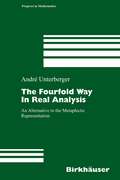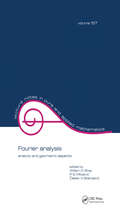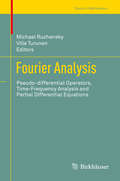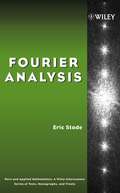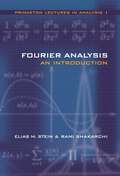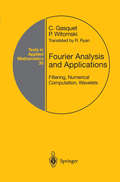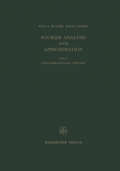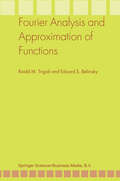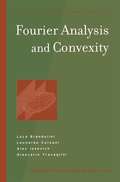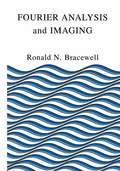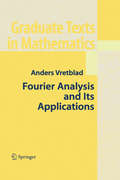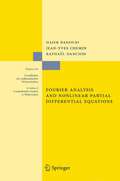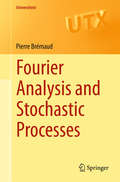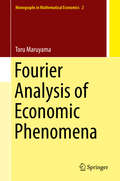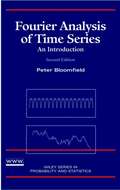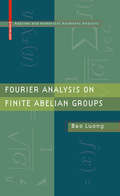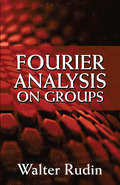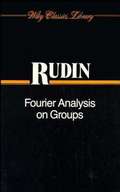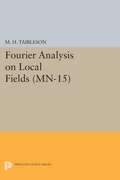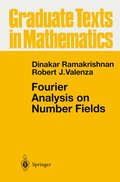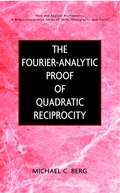- Table View
- List View
Four-sided pyramid and Net of a four-sided pyramid (UEB Uncontracted)
by Rnib BookshareHere are two images: a four-sided pyramid, and a net of a four-sided pyramid. Cut along the fine vertical line down the centre of the A4 sheet, to make two A5 pages with an image on each. There will be a locator dot shown at the top left of each A5 page when it is the correct way up. Four-sided pyramid - The image of a four-sided pyramid is on the left of the sheet. It shows the 3D shape of a four-sided pyramid in perspective so that two of its four side faces can be found. The base of a four-sided pyramid is square and the four sides are triangular. The two faces shown in this image are distorted because of the perspective view. They have different textures (or different shades of pink in the Large Print image). The two faces have been numbered to correspond to the numbered faces on the net of a four-sided pyramid. Net of a four-sided pyramid - The net of a four-sided pyramid is on the right of the sheet. It is a flat (2D) image of its faces, arranged so that they can be folded together to make the solid 3D shape of the four-sided pyramid. To make the 3D shape, the 2D shape should be folded along the dashed lines between the faces so that all of the edges meet. A four-sided pyramids net can be made with other arrangements of the faces.
The Fourfold Way in Real Analysis: An Alternative to the Metaplectic Representation (Progress in Mathematics #250)
by André UnterbergerFourier Analysis: Analytic and Geometric Aspects
by William O. BrayProviding complete expository and research papers on the geometric and analytic aspects of Fourier analysis, this work discusses new approaches to classical problems in the theory of trigonometric series, singular integrals/pseudo-differential operators, Fourier analysis on various groups, numerical aspects of Fourier analysis and their applications, wavelets and more.
Fourier Analysis: Pseudo-differential Operators, Time-Frequency Analysis and Partial Differential Equations (Trends in Mathematics)
by Michael Ruzhansky Ville TurunenThis book is devoted to the broad field of Fourier analysis and its applications to several areas of mathematics, including problems in the theory of pseudo-differential operators, partial differential equations, and time-frequency analysis. It is based on lectures given at the international conference “Fourier Analysis and Pseudo-Differential Operators,” June 25–30, 2012, at Aalto University, Finland. This collection of 20 refereed articles is based on selected talks and presents the latest advances in the field. The conference was a satellite meeting of the 6th European Congress of Mathematics, which took place in Krakow in July 2012; it was also the 6th meeting in the series “Fourier Analysis and Partial Differential Equations.”
Fourier Analysis (Pure and Applied Mathematics: A Wiley Series of Texts, Monographs and Tracts #109)
by Eric StadeA reader-friendly, systematic introduction to Fourier analysis Rich in both theory and application, Fourier Analysis presents a unique and thorough approach to a key topic in advanced calculus. This pioneering resource tells the full story of Fourier analysis, including its history and its impact on the development of modern mathematical analysis, and also discusses essential concepts and today's applications. Written at a rigorous level, yet in an engaging style that does not dilute the material, Fourier Analysis brings two profound aspects of the discipline to the forefront: the wealth of applications of Fourier analysis in the natural sciences and the enormous impact Fourier analysis has had on the development of mathematics as a whole. Systematic and comprehensive, the book: Presents material using a cause-and-effect approach, illustrating where ideas originated and what necessitated them Includes material on wavelets, Lebesgue integration, L2 spaces, and related concepts Conveys information in a lucid, readable style, inspiring further reading and research on the subject Provides exercises at the end of each section, as well as illustrations and worked examples throughout the text Based upon the principle that theory and practice are fundamentally linked, Fourier Analysis is the ideal text and reference for students in mathematics, engineering, and physics, as well as scientists and technicians in a broad range of disciplines who use Fourier analysis in real-world situations.
Fourier Analysis: An Introduction
by Elias M. Stein Rami ShakarchiThis first volume, a three-part introduction to the subject, is intended for students with a beginning knowledge of mathematical analysis who are motivated to discover the ideas that shape Fourier analysis. It begins with the simple conviction that Fourier arrived at in the early nineteenth century when studying problems in the physical sciences--that an arbitrary function can be written as an infinite sum of the most basic trigonometric functions. The first part implements this idea in terms of notions of convergence and summability of Fourier series, while highlighting applications such as the isoperimetric inequality and equidistribution. The second part deals with the Fourier transform and its applications to classical partial differential equations and the Radon transform; a clear introduction to the subject serves to avoid technical difficulties. The book closes with Fourier theory for finite abelian groups, which is applied to prime numbers in arithmetic progression. In organizing their exposition, the authors have carefully balanced an emphasis on key conceptual insights against the need to provide the technical underpinnings of rigorous analysis. Students of mathematics, physics, engineering and other sciences will find the theory and applications covered in this volume to be of real interest. The Princeton Lectures in Analysis represents a sustained effort to introduce the core areas of mathematical analysis while also illustrating the organic unity between them. Numerous examples and applications throughout its four planned volumes, of which Fourier Analysis is the first, highlight the far-reaching consequences of certain ideas in analysis to other fields of mathematics and a variety of sciences. Stein and Shakarchi move from an introduction addressing Fourier series and integrals to in-depth considerations of complex analysis; measure and integration theory, and Hilbert spaces; and, finally, further topics such as functional analysis, distributions and elements of probability theory.
Fourier Analysis: An Introduction
by Elias M. Stein Rami ShakarchiThis first volume, a three-part introduction to the subject, is intended for students with a beginning knowledge of mathematical analysis who are motivated to discover the ideas that shape Fourier analysis. It begins with the simple conviction that Fourier arrived at in the early nineteenth century when studying problems in the physical sciences--that an arbitrary function can be written as an infinite sum of the most basic trigonometric functions. The first part implements this idea in terms of notions of convergence and summability of Fourier series, while highlighting applications such as the isoperimetric inequality and equidistribution. The second part deals with the Fourier transform and its applications to classical partial differential equations and the Radon transform; a clear introduction to the subject serves to avoid technical difficulties. The book closes with Fourier theory for finite abelian groups, which is applied to prime numbers in arithmetic progression. In organizing their exposition, the authors have carefully balanced an emphasis on key conceptual insights against the need to provide the technical underpinnings of rigorous analysis. Students of mathematics, physics, engineering and other sciences will find the theory and applications covered in this volume to be of real interest. The Princeton Lectures in Analysis represents a sustained effort to introduce the core areas of mathematical analysis while also illustrating the organic unity between them. Numerous examples and applications throughout its four planned volumes, of which Fourier Analysis is the first, highlight the far-reaching consequences of certain ideas in analysis to other fields of mathematics and a variety of sciences. Stein and Shakarchi move from an introduction addressing Fourier series and integrals to in-depth considerations of complex analysis; measure and integration theory, and Hilbert spaces; and, finally, further topics such as functional analysis, distributions and elements of probability theory.
Fourier Analysis: Analytic and Geometric Aspects
by William O. Bray; P.S. Milojević; Časlav V. StanojevićProviding complete expository and research papers on the geometric and analytic aspects of Fourier analysis, this work discusses new approaches to classical problems in the theory of trigonometric series, singular integrals/pseudo-differential operators, Fourier analysis on various groups, numerical aspects of Fourier analysis and their applications, wavelets and more.
Fourier Analysis and Applications: Filtering, Numerical Computation, Wavelets (Texts in Applied Mathematics #30)
by Claude Gasquet Patrick WitomskiThe object of this book is two-fold -- on the one hand it conveys to mathematical readers a rigorous presentation and exploration of the important applications of analysis leading to numerical calculations. On the other hand, it presents physics readers with a body of theory in which the well-known formulae find their justification. The basic study of fundamental notions, such as Lebesgue integration and theory of distribution, allow the establishment of the following areas: Fourier analysis and convolution Filters and signal analysis time-frequency analysis (gabor transforms and wavelets). The whole is rounded off with a large number of exercises as well as selected worked-out solutions.
Fourier Analysis and Applications: Filtering, Numerical Computation, Wavelets (Texts in Applied Mathematics #30)
by Claude Gasquet Patrick WitomskiFourier Analysis and Approximation: One Dimensional Theory (Lehrbücher und Monographien aus dem Gebiete der exakten Wissenschaften #1)
by P.L. Butzer Nessel TrebelsAt the international conference on 'Harmonic Analysis and Integral Transforms', conducted by one of the authors at the Mathematical Research Institute in Oberwolfach (Black Forest) in August 1965, it was felt that there was a real need for a book on Fourier analysis stressing (i) parallel treatment of Fourier series and Fourier trans forms from a transform point of view, (ii) treatment of Fourier transforms in LP(lRn)_ space not only for p = 1 and p = 2, (iii) classical solution of partial differential equations with completely rigorous proofs, (iv) theory of singular integrals of convolu tion type, (v) applications to approximation theory including saturation theory, (vi) multiplier theory, (vii) Hilbert transforms, Riesz fractional integrals, Bessel potentials, (viii) Fourier transform methods on locally compact groups. This study aims to consider these aspects, presenting a systematic treatment of Fourier analysis on the circle as well as on the infinite line, and of those areas of approximation theory which are in some way or other related thereto. A second volume is in preparation which goes beyond the one-dimensional theory presented here to cover the subject for functions of several variables. Approximately a half of this first volume deals with the theories of Fourier series and of Fourier integrals from a transform point of view.
Fourier Analysis and Approximation of Functions
by Roald M. Trigub Eduard S. BelinskyIn Fourier Analysis and Approximation of Functions basics of classical Fourier Analysis are given as well as those of approximation by polynomials, splines and entire functions of exponential type. In Chapter 1 which has an introductory nature, theorems on convergence, in that or another sense, of integral operators are given. In Chapter 2 basic properties of simple and multiple Fourier series are discussed, while in Chapter 3 those of Fourier integrals are studied. The first three chapters as well as partially Chapter 4 and classical Wiener, Bochner, Bernstein, Khintchin, and Beurling theorems in Chapter 6 might be interesting and available to all familiar with fundamentals of integration theory and elements of Complex Analysis and Operator Theory. Applied mathematicians interested in harmonic analysis and/or numerical methods based on ideas of Approximation Theory are among them. In Chapters 6-11 very recent results are sometimes given in certain directions. Many of these results have never appeared as a book or certain consistent part of a book and can be found only in periodics; looking for them in numerous journals might be quite onerous, thus this book may work as a reference source. The methods used in the book are those of classical analysis, Fourier Analysis in finite-dimensional Euclidean space Diophantine Analysis, and random choice.
Fourier Analysis and Convexity (Applied and Numerical Harmonic Analysis)
by Luca Brandolini Leonardo Colzani Alex Iosevich Giancarlo TravagliniExplores relationship between Fourier Analysis, convex geometry, and related areas; in the past, study of this relationship has led to important mathematical advances Presents new results and applications to diverse fields such as geometry, number theory, and analysis Contributors are leading experts in their respective fields Will be of interest to both pure and applied mathematicians
Fourier Analysis and Imaging
by Ronald BracewellAs Lord Kelvin said, "Fourier's theorem is not only one of the most beautiful results of modern analysis, but it may be said to furnish an indispensable instrument in the treatment of nearly every recondite question in modern physics." This has remained durable knowledge for a century, and has extended its applicability to topics as diverse as medical imaging (CT scanning), the presentation of images on screens and their digital transmission, remote sensing, geophysical exploration, and many branches of engineering. Fourier Analysis and Imaging is based on years of teaching a course on the Fourier Transform at the senior or early graduate level, as well as on Prof. Bracewell's 1995 text Two-Dimensional Imaging. It is an excellent textbook and will also be a welcome addition to the reference library of those many professionals whose daily activities involve Fourier analysis in its many guises.
Fourier Analysis and Its Applications (Graduate Texts in Mathematics #223)
by Anders VretbladA carefully prepared account of the basic ideas in Fourier analysis and its applications to the study of partial differential equations. The author succeeds to make his exposition accessible to readers with a limited background, for example, those not acquainted with the Lebesgue integral. Readers should be familiar with calculus, linear algebra, and complex numbers. At the same time, the author has managed to include discussions of more advanced topics such as the Gibbs phenomenon, distributions, Sturm-Liouville theory, Cesaro summability and multi-dimensional Fourier analysis, topics which one usually does not find in books at this level. A variety of worked examples and exercises will help the readers to apply their newly acquired knowledge.
Fourier Analysis and Nonlinear Partial Differential Equations (Grundlehren der mathematischen Wissenschaften #343)
by Hajer Bahouri Jean-Yves Chemin Raphaël DanchinIn recent years, the Fourier analysis methods have expereinced a growing interest in the study of partial differential equations. In particular, those techniques based on the Littlewood-Paley decomposition have proved to be very efficient for the study of evolution equations. The present book aims at presenting self-contained, state- of- the- art models of those techniques with applications to different classes of partial differential equations: transport, heat, wave and Schrödinger equations. It also offers more sophisticated models originating from fluid mechanics (in particular the incompressible and compressible Navier-Stokes equations) or general relativity. It is either directed to anyone with a good undergraduate level of knowledge in analysis or useful for experts who are eager to know the benefit that one might gain from Fourier analysis when dealing with nonlinear partial differential equations.
Fourier Analysis and Stochastic Processes (Universitext)
by Pierre BrémaudThis work is unique as it provides a uniform treatment of the Fourier theories of functions (Fourier transforms and series, z-transforms), finite measures (characteristic functions, convergence in distribution), and stochastic processes (including arma series and point processes).It emphasises the links between these three themes. The chapter on the Fourier theory of point processes and signals structured by point processes is a novel addition to the literature on Fourier analysis of stochastic processes. It also connects the theory with recent lines of research such as biological spike signals and ultrawide-band communications.Although the treatment is mathematically rigorous, the convivial style makes the book accessible to a large audience. In particular, it will be interesting to anyone working in electrical engineering and communications, biology (point process signals) and econometrics (arma models). Each chapter has an exercise section, which makes Fourier Analysis and Stochastic Processes suitable for a graduate course in applied mathematics, as well as for self-study.
Fourier Analysis of Economic Phenomena (Monographs in Mathematical Economics #2)
by Toru MaruyamaThis is the first monograph that discusses in detail the interactions between Fourier analysis and dynamic economic theories, in particular, business cycles.Many economic theories have analyzed cyclical behaviors of economic variables. In this book, the focus is on a couple of trials: (1) the Kaldor theory and (2) the Slutsky effect. The Kaldor theory tries to explain business fluctuations in terms of nonlinear, 2nd-order ordinary differential equations (ODEs). In order to explain periodic behaviors of a solution, the Hopf-bifurcation theorem frequently plays a key role. Slutsky's idea is to look at the periodic movement as an overlapping effect of random shocks. The Slutsky process is a weakly stationary process, the periodic (or almost periodic) behavior of which can be analyzed by the Bochner theorem. The goal of this book is to give a comprehensive and rigorous justification of these ideas. Therefore, the aim is first to give a complete theory that supports the Hopf theorem and to prove the existence of periodic solutions of ODEs; and second to explain the mathematical structure of the Bochner theorem and its relation to periodic (or almost periodic) behaviors of weakly stationary processes.Although these two targets are the principal ones, a large number of results from Fourier analysis must be prepared in order to reach these goals. The basic concepts and results from classical as well as generalized Fourier analysis are provided in a systematic way.Prospective readers are assumed to have sufficient knowledge of real, complex analysis. However, necessary economic concepts are explained in the text, making this book accessible even to readers without a background in economics.
Fourier Analysis of Time Series: An Introduction
by Peter BloomfieldA new, revised edition of a yet unrivaled work on frequency domain analysis Long recognized for his unique focus on frequency domain methods for the analysis of time series data as well as for his applied, easy-to-understand approach, Peter Bloomfield brings his well-known 1976 work thoroughly up to date. With a minimum of mathematics and an engaging, highly rewarding style, Bloomfield provides in-depth discussions of harmonic regression, harmonic analysis, complex demodulation, and spectrum analysis. All methods are clearly illustrated using examples of specific data sets, while ample exercises acquaint readers with Fourier analysis and its applications. The Second Edition: * Devotes an entire chapter to complex demodulation * Treats harmonic regression in two separate chapters * Features a more succinct discussion of the fast Fourier transform * Uses S-PLUS commands (replacing FORTRAN) to accommodate programming needs and graphic flexibility * Includes Web addresses for all time series data used in the examples An invaluable reference for statisticians seeking to expand their understanding of frequency domain methods, Fourier Analysis of Time Series, Second Edition also provides easy access to sophisticated statistical tools for scientists and professionals in such areas as atmospheric science, oceanography, climatology, and biology.
Fourier Analysis on Finite Abelian Groups (Applied and Numerical Harmonic Analysis)
by Bao LuongThis unified, self-contained book examines the mathematical tools used for decomposing and analyzing functions, specifically, the application of the [discrete] Fourier transform to finite Abelian groups. With countless examples and unique exercise sets at the end of each section, Fourier Analysis on Finite Abelian Groups is a perfect companion to a first course in Fourier analysis. This text introduces mathematics students to subjects that are within their reach, but it also has powerful applications that may appeal to advanced researchers and mathematicians. The only prerequisites necessary are group theory, linear algebra, and complex analysis.
Fourier Analysis on Groups (Dover Books on Mathematics)
by Walter RudinWritten by a master mathematical expositor, this classic text reflects the results of the intense period of research and development in the area of Fourier analysis in the decade preceding its first publication in 1962. The enduringly relevant treatment is geared toward advanced undergraduate and graduate students and has served as a fundamental resource for more than five decades.The self-contained text opens with an overview of the basic theorems of Fourier analysis and the structure of locally compact Abelian groups. Subsequent chapters explore idempotent measures, homomorphisms of group algebras, measures and Fourier transforms on thin sets, functions of Fourier transforms, closed ideals in L1(G), Fourier analysis on ordered groups, and closed subalgebras of L1(G). Helpful Appendixes contain background information on topology and topological groups, Banach spaces and algebras, and measure theory.
Fourier Analysis on Groups
by Walter RudinIn the late 1950s, many of the more refined aspects of Fourier analysis were transferred from their original settings (the unit circle, the integers, the real line) to arbitrary locally compact abelian (LCA) groups. Rudin's book, published in 1962, was the first to give a systematic account of these developments and has come to be regarded as a classic in the field. The basic facts concerning Fourier analysis and the structure of LCA groups are proved in the opening chapters, in order to make the treatment relatively self-contained.
Fourier Analysis on Local Fields. (MN-15)
by M. H. TaiblesonThis book presents a development of the basic facts about harmonic analysis on local fields and the n-dimensional vector spaces over these fields. It focuses almost exclusively on the analogy between the local field and Euclidean cases, with respect to the form of statements, the manner of proof, and the variety of applications.The force of the analogy between the local field and Euclidean cases rests in the relationship of the field structures that underlie the respective cases. A complete classification of locally compact, non-discrete fields gives us two examples of connected fields (real and complex numbers); the rest are local fields (p-adic numbers, p-series fields, and their algebraic extensions). The local fields are studied in an effort to extend knowledge of the reals and complexes as locally compact fields.The author's central aim has been to present the basic facts of Fourier analysis on local fields in an accessible form and in the same spirit as in Zygmund's Trigonometric Series (Cambridge, 1968) and in Introduction to Fourier Analysis on Euclidean Spaces by Stein and Weiss (1971).Originally published in 1975.The Princeton Legacy Library uses the latest print-on-demand technology to again make available previously out-of-print books from the distinguished backlist of Princeton University Press. These editions preserve the original texts of these important books while presenting them in durable paperback and hardcover editions. The goal of the Princeton Legacy Library is to vastly increase access to the rich scholarly heritage found in the thousands of books published by Princeton University Press since its founding in 1905.
Fourier Analysis on Number Fields (Graduate Texts in Mathematics #186)
by Dinakar Ramakrishnan Robert J. ValenzaA modern approach to number theory through a blending of complementary algebraic and analytic perspectives, emphasising harmonic analysis on topological groups. The main goal is to cover John Tates visionary thesis, giving virtually all of the necessary analytic details and topological preliminaries -- technical prerequisites that are often foreign to the typical, more algebraically inclined number theorist. While most of the existing treatments of Tates thesis are somewhat terse and less than complete, the intent here is to be more leisurely, more comprehensive, and more comprehensible. While the choice of objects and methods is naturally guided by specific mathematical goals, the approach is by no means narrow. In fact, the subject matter at hand is germane not only to budding number theorists, but also to students of harmonic analysis or the representation theory of Lie groups. The text addresses students who have taken a year of graduate-level course in algebra, analysis, and topology. Moreover, the work will act as a good reference for working mathematicians interested in any of these fields.
The Fourier-Analytic Proof of Quadratic Reciprocity (Pure and Applied Mathematics: A Wiley Series of Texts, Monographs and Tracts #41)
by Michael C. BergA unique synthesis of the three existing Fourier-analytic treatments of quadratic reciprocity. The relative quadratic case was first settled by Hecke in 1923, then recast by Weil in 1964 into the language of unitary group representations. The analytic proof of the general n-th order case is still an open problem today, going back to the end of Hecke's famous treatise of 1923. The Fourier-Analytic Proof of Quadratic Reciprocity provides number theorists interested in analytic methods applied to reciprocity laws with a unique opportunity to explore the works of Hecke, Weil, and Kubota. This work brings together for the first time in a single volume the three existing formulations of the Fourier-analytic proof of quadratic reciprocity. It shows how Weil's groundbreaking representation-theoretic treatment is in fact equivalent to Hecke's classical approach, then goes a step further, presenting Kubota's algebraic reformulation of the Hecke-Weil proof. Extensive commutative diagrams for comparing the Weil and Kubota architectures are also featured. The author clearly demonstrates the value of the analytic approach, incorporating some of the most powerful tools of modern number theory, including adèles, metaplectric groups, and representations. Finally, he points out that the critical common factor among the three proofs is Poisson summation, whose generalization may ultimately provide the resolution for Hecke's open problem.

